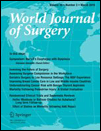Community-Based Assessment of Surgical Symptoms in a Low-Income Urban Population
Abstract
Background
The global burden of surgical disease has not been well quantified, but is potentially immense. Given the enormity of the problem and the relative paucity of data, definition and monitoring of surgical burden of disease is an essential step in confronting the problem. This study aimed to estimate the prevalence of non-acute surgical disease symptoms in a low-income population.
Methods
The survey was conducted as part of the Indus Hospital Community Cohort in Karachi, Pakistan. A systematic random sampling design was used to enroll 667 households from March to August 2011. An unvalidated questionnaire intending to measure prevalence of surgical symptoms was administered to 780 participants.
Results
761 participants completed the screening questionnaire, with 346 (45 %) reporting one or more symptoms requiring surgical assessment (excluding those screened positive for symptoms of osetoarthritis), of which only 8.4 % followed up on scheduled appointments at the referral hospital. A total of 126 past surgical procedures were recorded in 120 participants.
Conclusion
There is a high prevalence of symptoms suggestive of surgical diseases in our urban catchment population with relatively convenient access to health facilities including a tertiary care hospital providing free of cost care. The perceived severity of symptoms, and a complex interaction of other factors, may play an important role in understanding health seeking behavior in our population. Developing a context-specific validated tool to correctly identify surgical symptoms disease in the community with appropriate referral for early management is essential to identify and therefore reduce the burden of surgical diseases within the community. This must happen hand in hand with further studies to understand the barriers to seeking timely health care.
Conflict of interest
None.




